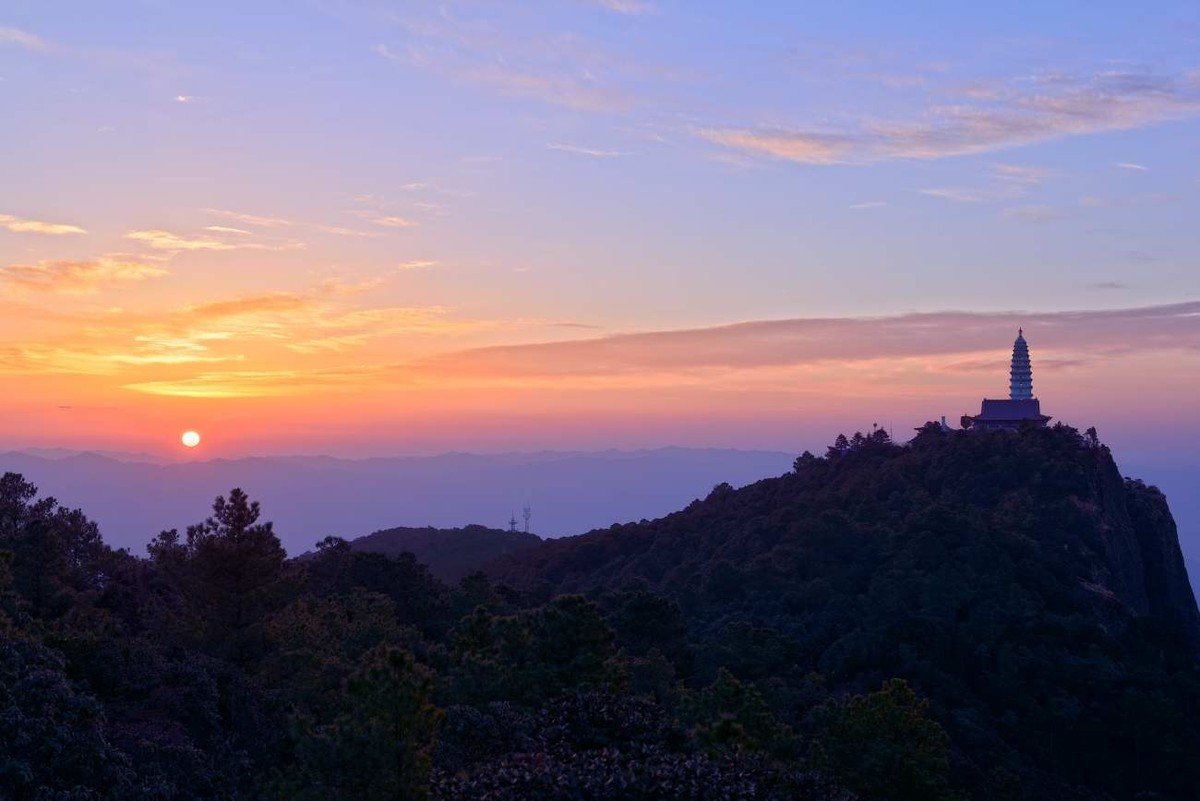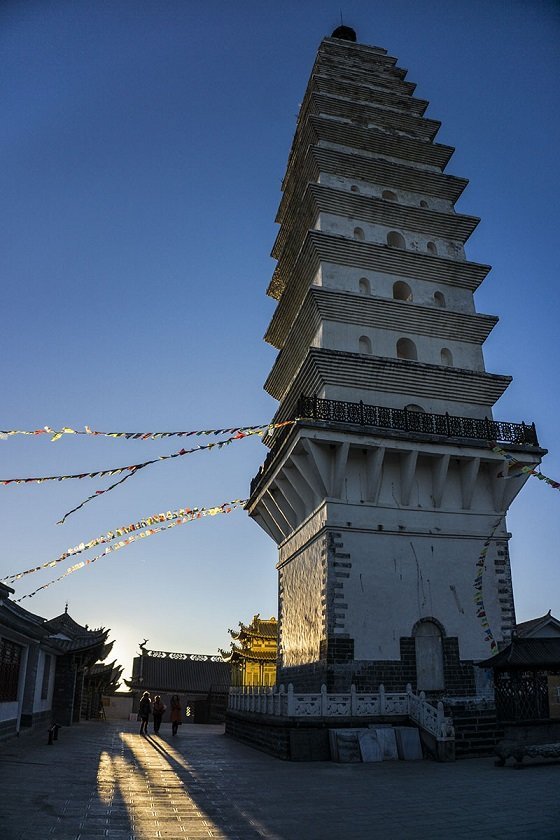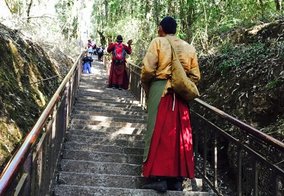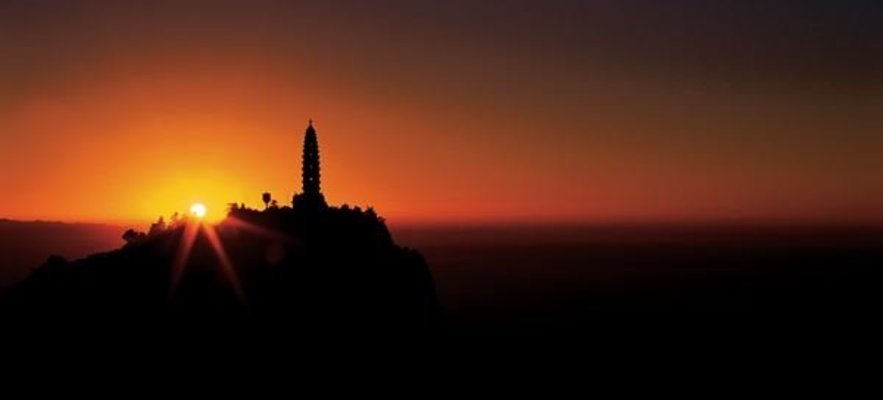With a beautiful scenery and numerous temples, Jizu Shan (which means "Chicken Foot Mountain") is one of China's most famous Buddhist mountains. It is located in Binchuan County / Dali prefecture, some 370 kilometers west of Kunming and is a great for visiting all year round. But the area covered by the Jizu Mountain Range (consisting of 13 peaks, 45 cliffs and more than 100 springs) is also great for trekking activities as well as watching wild animals, especially monkeys.

As the famous Tang Dynasty (618-907 )master monk Xuanzang wrote in his Great Tang Records on the Western Regions, the Kapassa Thera - the first disciple of Sakyamuni, founder of Buddhism - sat quietly on Jizu Mountain, got Enlightment and became a Buddha 2000 years ago. This of course honored Jizu Mountain as the holy land for Buddhism. Today, there are 36 temples and 72 nunneries in the area, some of them had been destroyed during the "Cultural Revolution" of the 1970s, but there are still some, which have been well maintained during the years:
Zhusheng Temple (祝胜寺)
First built in Qing Dynasty (1644-1912) with the empress' money, the name originates from the Emperor of Guangxu. There is an overall painting of the whole Jizu Mountain on the wall of the left gate, which shouldn’t be missed.
Huashou Gate (华首门) and Taizige Pavilion (太子阁)
Huashou Gate is a cliff, and in the middle of it, a narrow seam can be recognized It divides the cliff into two parts, making it look like a gate. It is said that the great Kapssa Thera (see above) got his Enlightment here at this gate and became a Buddha. At the left side of Huashou Gate, there is a pavilion named Taizige, worshipping Taizi - the son of Liubei (emperor of the Han Dynasty, 206 BC - 220 AD). There is a century-long legend: if a man can hit the tiny Taizi statue, situated in a hole on the Taizige, by a coin, then his wife will get pregnant with a son.
Jinding Temple (金顶寺)
This temple is located on the highest peak of Jizu Mountain with an altitude of 3240 meters! It is famous for its four great views, which are: the sunrise coming from the east, the Er’hai Lake located in the west, a view over the clouds in the south and the Jade Dragon Mountain in the north. Lengyan Tower and Jindian Pavilion are the symbol of Jizu Mountain.
Travel recommendation: you can stay overnight at inns beside Jinding Temple, then get up early in the next morning to witness the beautiful sunrise.

But Jizu Mountain is not only the holy land to Chinese Buddhists but also a must-visit place for Tibetan Pilgrims. Tibetan worshippers pray and crawl and kowtow all along from the middle of Jizu mountain to the top.



How to get there:
Bus:
1. From Kunming: You can take bus from Kunming to Binchuan at West Terminal Station (one shuttle bus of every hour, earliest bus starts at 08:20am latest bus in day is 15:30, 5 hours’ drive, 130RMB per person; one overnight bus starts at 22:00pm, arrives at Binchuan at 08:00 the next morning). Upon arrival at Binchuan Bus station, grab one of the green minivans taking you to a parking lot behind Zhusheng Temple (earliest start at 06:30, 15 RMB per person).
2. From Dali: You can take the bus from Xiaguan (Dali New Town) to Jizu Mountain directly. From Xiaguan's long-distance bus station, the shuttle bus leaves in the mornings at 08:30 and 09:00, 30 RMB. Alternatively, take the bus from Xiaguan's Eastern Bus Station (one shuttle bus every 15 minutes, latest bus leaves at 18:30h). Upon arrival at Binchuan bus station take one of the minivans (see above) to get to Zhusheng Temple.
Train: You can take train from Kunming to Dali, then take the bus to Jizu Mountain. For train tickets booking service please click here.
Rental car with driver: Contact us for your personal transportation service, we will customize your travel service accordingly.
Fees:
Entrance fee: 80 RMB per person
Shuttle bus from Zhusheng Temple to cable car tickets office: 8 RMB per person
Cable car: 40 RMB (one way); 70 RMB (round way)
Please note that all vehicles need to stop at the gate of Jizu Mountain for entrance tickets checking.
- 886 reads
- Like this







